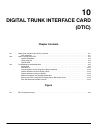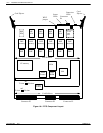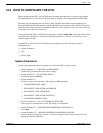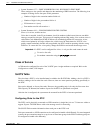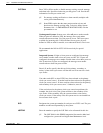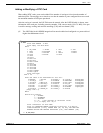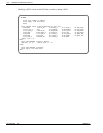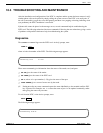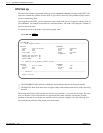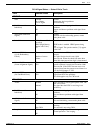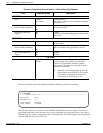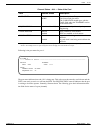
10-6 Installation and Maintenance Volume
Octel 200/300 S.4.1 PB60019−01
Enter YES or NO to enable or disable message waiting, network message,
and alarm calls. Specifies whether the port may place a call. Provide this
information for each port on the card.
. For message waiting notification or alarm outcalls, multiple calls
can be placed simultaneously.
. Some PBXs require that the same port/extension activate and
deactivate the message waiting lamp. To do this, define System
Parameter 106 — LAMP MESSAGE WAITING PORT, with the
port number to use.
Nonintegrated Systems. In most cases, allow all ports to make outcalls.
When all ports are defined as YES, the message server only makes
outcalls when no more than 3/4 of the ports are in use. This leaves ports
available for incoming calls. If NO is defined for any ports, all ports
defined as YES are used for outcalls, even when more than 3/4 are in use.
We recommend that NO for OUTCALL be used only for special
applications.
Integrated Systems. If eight or fewer ports are configured, the message
server makes outcalls when at least two ports are idle. If 9−32 ports are
configured, the message server makes outcalls when at least three ports are
idle. If more than 32 ports are configured, the message server makes
outcalls when at least four ports are idle.
Enter 1, 2, or 3 to specify that this card is the primary, secondary, or
tertiary system clock sync source or N that the card is not used as a clock
sync source.
If no other cards (PIC or other DTIC) have been selected as the primary
clock sync source, enter 1. If another card has been selected as the primary
clock sync source, enter 2. If other cards have been selected as the primary
and secondary clock sync source, enter 3. Otherwise, enter N.
If the card selected as the primary clock sync source has problems (for
example, the clock is lost), the system switches to the secondary clock
sync source. If the secondary fails, the system switches to the tertiary
clock sync source. If the tertiary fails, the system uses its own internal but
less accurate clock crystal.
Designates the system port number for each port on a DTIC card. The port
numbers are allocated sequentially by the system.
Enter the number to specify the LSP Table to be referenced for this slot.
. The LSP Table for this DPNSS integration first must be added and
configured at a password level higher than Maintenance level.
OUTCALL
SYNC
SYS
LSPTAB




